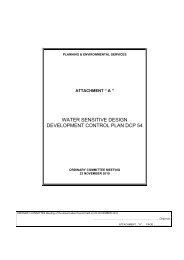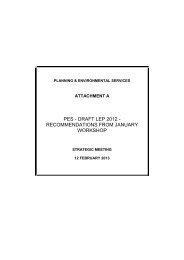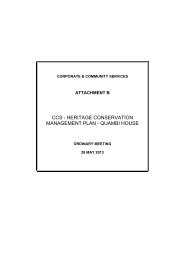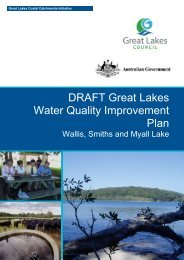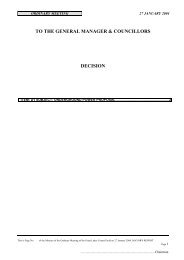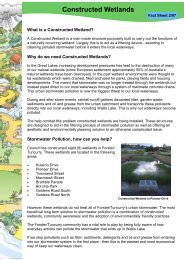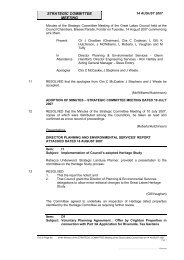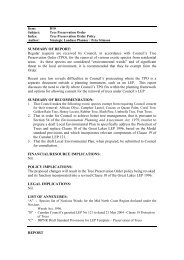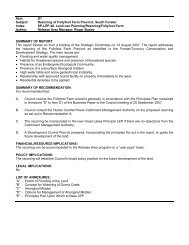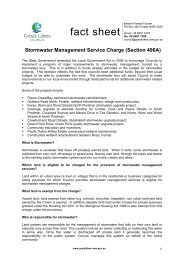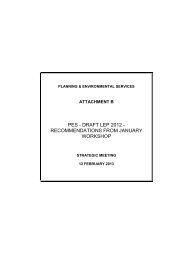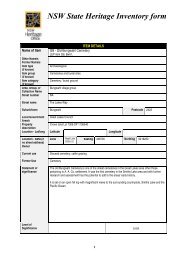13.2 The Wallis Lake Estuary Management Committee - Great Lakes ...
13.2 The Wallis Lake Estuary Management Committee - Great Lakes ...
13.2 The Wallis Lake Estuary Management Committee - Great Lakes ...
Create successful ePaper yourself
Turn your PDF publications into a flip-book with our unique Google optimized e-Paper software.
<strong>Wallis</strong> <strong>Lake</strong> <strong>Estuary</strong> <strong>Management</strong> Plan<br />
2.2.5 <strong>Management</strong> area E: Coolongolook and Wang Wauk Rivers<br />
<strong>The</strong> Coolongolook and Wang Wauk River system form <strong>Management</strong> Area E encompassing the<br />
area upstream from Rose Point (including Shallow Bay and Minimbah Creek) to Locketts Crossing<br />
on the Coolongolook River and to the Pacific Highway on the Wang Wauk River (Figure 2.8).<br />
Due to large areas of land cleared for agriculture, similar problems identified in Area D (Wallamba<br />
River) occur in this management area including nutrient enrichment, faecal contamination from<br />
livestock and erosion.<br />
Water skiing occurs on the Coolongolook River, however it is much less intensive than on the<br />
Wallamba River. <strong>The</strong> area is also utilised by commercial fishermen.<br />
SEPP 14 wetland areas border the estuary in this management area downstream of the Wang<br />
Wauk and Coolongolook River confluence, surrounding Minimbah Creek and around Shallow Bay.<br />
Within these areas extensive saltmarsh communities are located on Minimbah Creek.<br />
Access to the upper navigable reaches of the Coolongolook River is via a ramp close to<br />
Coolongolook.<br />
2.2.6 <strong>Management</strong> area F: Wallingat River<br />
<strong>The</strong> Wallingat River from the Coolongolook confluence (including Mills Island) upstream to the Tea<br />
Tree Creek confluence comprise Area F (Figure 2.9).<br />
<strong>The</strong> Wallingat River has experienced little human impact with only 18% of the catchment cleared<br />
and the majority either State Forest or National Park. <strong>The</strong>re are no major townships on the banks<br />
of the river.<br />
Much of the foreshore area along the length of the Wallingat River is classified as SEPP 14<br />
wetland including areas on Mills Island. In addition extensive saltmarsh communities are located on<br />
the shoreline west of Mills Island.<br />
<strong>The</strong> management area is utilised by commercial fishermen and for recreation by water skiers,<br />
wakeboarders and paddle craft.<br />
<strong>The</strong> estuary can be accessed by a ramp within the Wallingat National Park in the upper reaches of<br />
the management area.<br />
17




